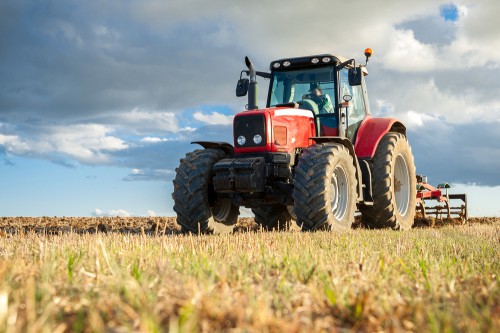What You Need to Know About Agricultural Greases

Lubricating greases have developed into sophisticated lubricants for specialised applications and non-more so than within the agricultural sector. Simple basic EP 2 greases are still popular but fall short of the requirements for longevity, water resistance, shock loading and in some cases biodegradability and/or food contact.
What are Lubricating Greases
Many will have heard of terms such as Lithium, Calcium or Complex greases but what do these terms mean and how does this affect their application and performance? Greases are composed of but not exclusively, base oils – held together in a soap structure formed by the reaction of basic chemicals with fatty acids. The soap structure formed changes how the product behaves in the presence of water, temperature, and loading.
Newer generations of greases have resulted in many improvements. Greases composed of Calcium Sulphonates introduced water resistant, high load greases ideal for off highway, construction, and agriculture. These greases are ideal for slow moving loads in less than ideal situations. Poly Urea greases introduced a new generation of lubricating grease technology. These greases offer high tolerance to wetter conditions and are ideally suited to electric motors and sealed for life units where longevity is a must. As a result, these greases are expensive and should only be used where these parameters are required.
Base oils occupy a large percentage of grease types and their selection has a profound effect on performance. Heavier grades are suitable for low speed applications whereas higher speeds utilise lighter viscosity grade base oils. Synthetics such as PAO have resulted in high performance greases. PAO (Poly Alpha Olefin) base stocks have found uses in many applications from engine oils to gear oils so their inclusion in lubricating greases was inevitable. Higher oxidation resistance and film strength are just some of the additional benefits afforded by synthetic base stocks.
The addition of solid lubricants such as Graphite, PTFE, Molybdenum Disulphide (MoS2) and Copper has further expanded their use in almost all applications in our lives today. Additives to prevent corrosion, anti-wear and corrosion resistance has lifted lubricating greases into performance lubricants.
Uses and Benefits of Lubricant Grease Types
Calcium greases where amongst the first to be used and their history can be traced back to the Egyptians lubricating chariot axles. This application was simple, but a greased wooden axle could be operated at speed offering a significant advantage. Whilst they have excellent lubricating and water resistance, Calcium greases have temperature limitations. The advent of Lithium greases and their Complex cousins gave better response to temperature and loadings making them the first choice for many applications such asmetal-on-metal joints, bearings and oscillation points, operating over a wide temperature range often in in dusty, dirty and wet environments.
Calcium Sulphonate greases would appear to be the ideal choice for agricultural applications. Wetter environments, high loadings make this generation of greases ideal; however, their cost can be prohibitive and like all greases no one type fits all applications.
Future trends
Over the next 10 years the most important factor will be environmental concern. This will impact on all lubricants used by the agricultural sector be it hydraulic, UTTO (Universal Tractor Transmission Oil) or lubricating greases. As with all areas of technology, this area is constantly evolving and will become as important as any lubricating grease used today.
Changing agricultural demands into evermore diverse crops and machinery will affect all lubricants in use. Increasing populations cannot be sustained by current practices and no doubt new ways of producing food crops will become evermore diverse offering new challenges to lubricating greases.
Correct Storage of Lubricating Greases
Agricultural and indeed all greases should be stored in dry conditions away from large temperature variations and protected again the ingress of dust, dirt and debris. Grease pails should have their lids replaced after use and stock rotated to ensure no grease is kept on site for more than 5 years.
Support and Advice
Exol Lubricants has a wealth of lubricant knowledge available through our friendly staff who can be contacted directly or email backed up by our online lubricants database available at https://www.exol-lubricants.com/oil-check/ Whether your business is an Agricultural supplier, repair, an end user or an enthusiast, we are always happy to help with all your lubrication needs.

